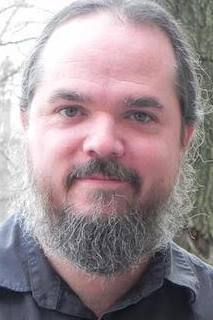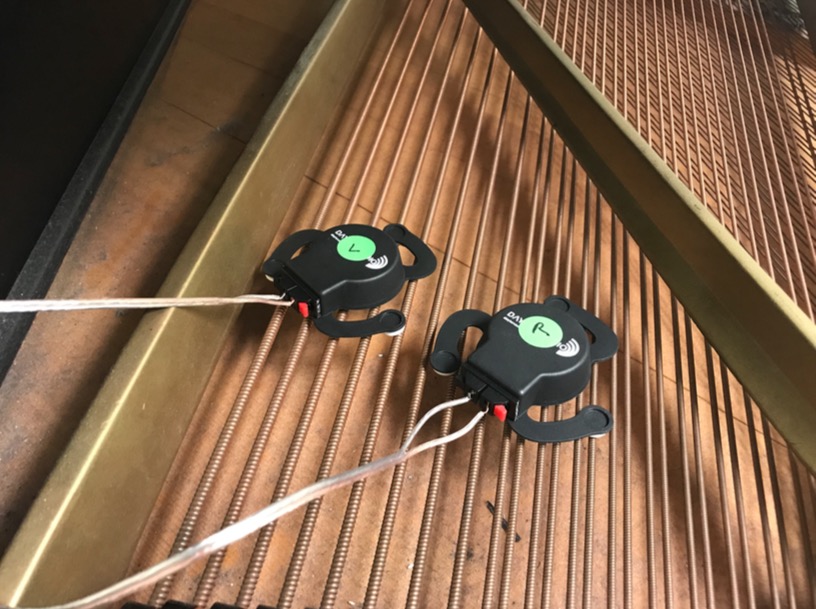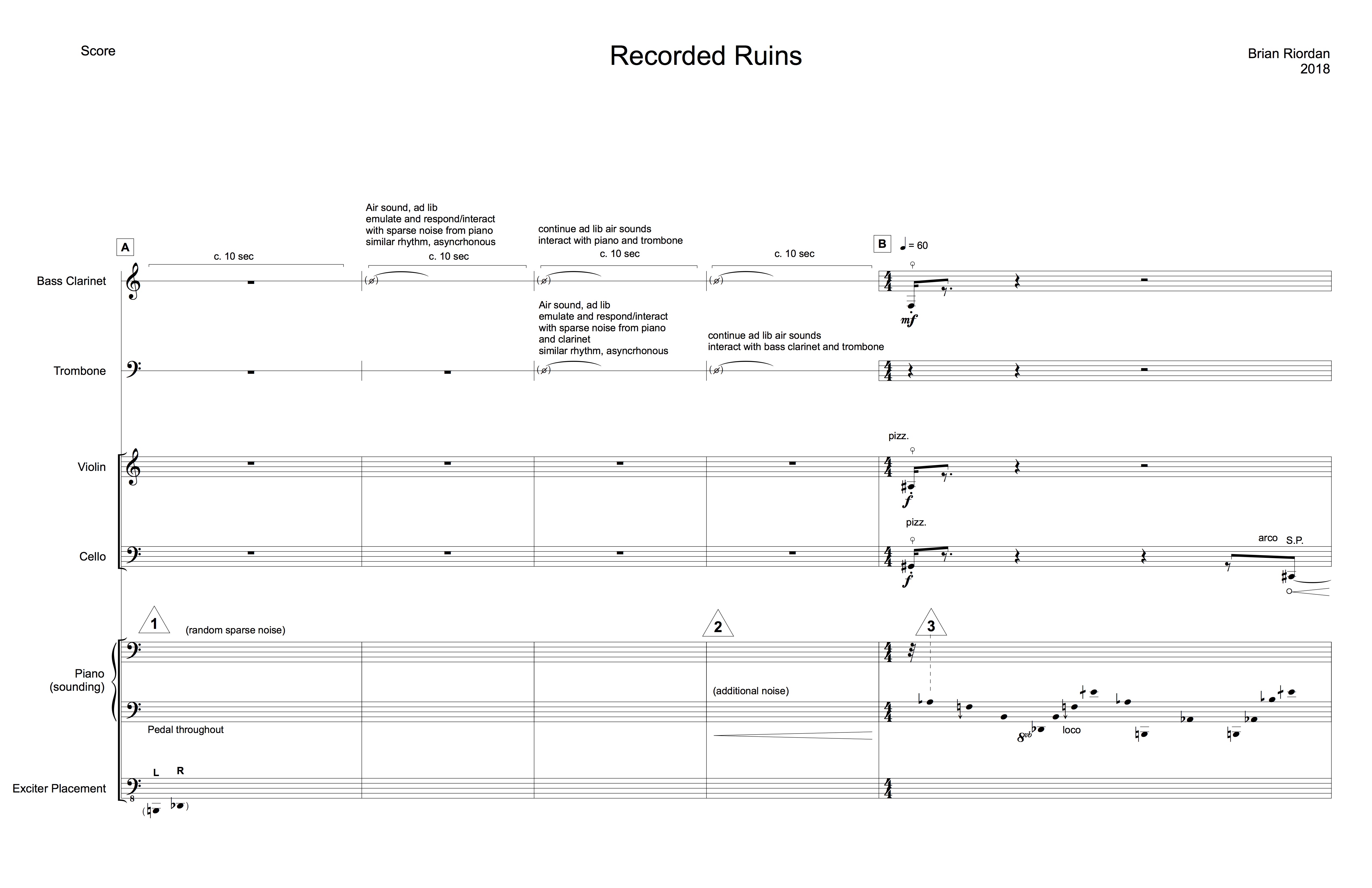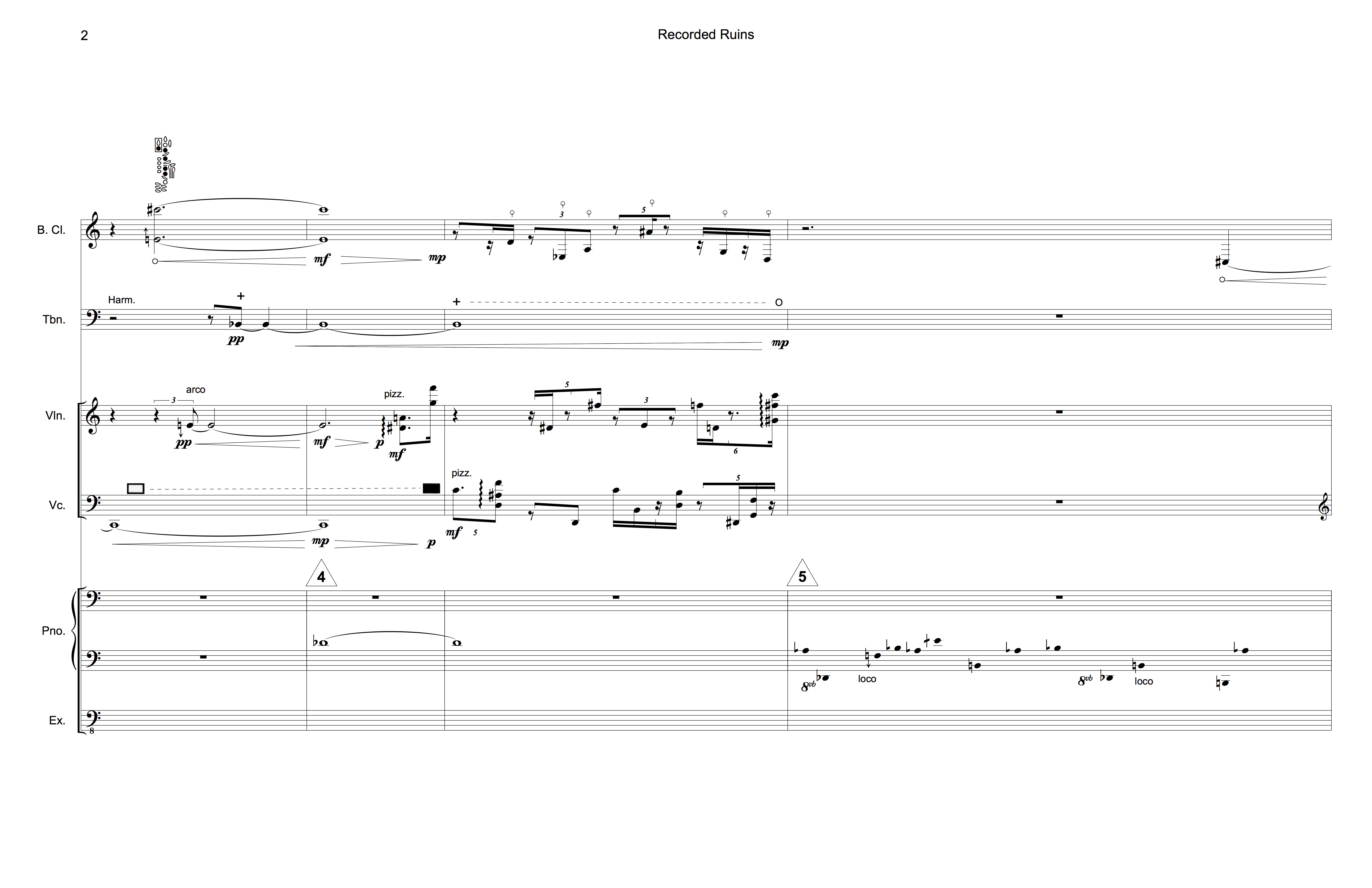Interview with Brian Riordan

Brian Riordan is a composer who “believes in high and low culture, acoustic and electronic, strictly composed and improvised, low fi and high fi, contemporary and folkloric, eastern and western, pop and avant grade, as well as tradition and transgression.” His work Recorded Ruins was the 1st prize winner of our 2018 Microtonal Composition Competition. We talked to Brian about his work and that piece in particular.
UnTwelve: I’d like to begin by diving right in and discussing your piece (which I hope the reader will have a chance to listen to before perusing this discussion). In your notes to the piece, you say, “All pitches are based on a custom Extended Just Intonation system tuned to at least two overtone series at a time." I think you mean that during the piece, there are 2 (very low) piano strings being vibrated, and those 2 strings are fundamental pitches for overtone series. The notes of those overtone series are then articulated (played) by the other instruments in various musical gestures, motives, melodies, and other formations. Do I have things right so far?

BR: Yes, when a transducer is on a piano string, any of the overtones from that exact string and be sounded. (Although I have trouble getting higher overtones to sound for acoustic reasons). From there, the ensemble can tune to either of the series that is sounded, or they can tune to their own series (which happens sometimes).
UnTwelve: So at the beginning, at letter B, the "notes" in the piano part are a series of resonated overtones of B and Db, beginning with a 7th partial of B, an F-natural-5th partial, an octave of B, fundamental of Db, B, 5th partial of Db, 11th partial of B, etc.

UnTwelve: You then say "The transducer piano part expands out to Bb and F# by the end of the piece." I'm curious what you mean by "expands out" ? is that a kind of large-scale voice-leading from B and Db to Bb and F# ?
BR: Maybe I should have phrased that statement a little better. What I meant was, I start on the B natural and Db series, and throughout the piece, the performer moves the transducers outward towards Bb and F#. So yes, it is a voice-leading thing. The series start intentionally close together, and end further apart; it changes the possibilities of where certain microtones exist. 11th partials (quarter tones) in the beginning of the piece start only a major 2nd away, whereas the piece ends with those type of microtonal accidentals much further away (m6th apart).
UnTwelve: Cool. . . so that's the large-scale structure. What were you thinking about on, as they used to say, the "local" level? Where do the individual gestures and note choices come from? Is it largely intuitive, or a grab-bag of algorithmic tricks, or something in between?
BR: On the local level it’s mostly gestural/intuitive. I’m an improvisor so I love improv sounding gestures, even in notated music. Something I’ve been exploring a lot over the last few years is a balance between hyper-activity and stasis. Basically drone/texture music that doesn’t stay still, and has a level of unpredictability. This isn’t in every piece I write, but it’s happened more than once in my recent work. Once I started playing around with the transducers, I realized I could do something that an Ebow couldn’t do: Loud short bursts (first occurring in that first 4/4 bar). So after a sparse noise texture, it was important to me to introduce the piano with non-drones. That said, I love the roaring sound of the drones here, so I’m not acting against that concept at all, just making sure it wasn’t the first thing the audience heard.
UnTwelve: It seems like this piece's relationship to the world of microtonality is via a technique related to "spectralism", i.e., you're exploring timbre and all the partials and stuff that goes into timbre.
BR: Regarding the improv gestures played by the rest of the ensemble, there isn’t anything spectral about them, and I made sure they weren’t in the series when those moments happened. So in a way, I am actively working against traditional spectralism, but obviously conscious of it.
UnTwelve: Interesting . . . . I think this tells a slightly more complex story than your program notes. You were saying that the ensemble pitches come from the overtone series, but I think you are saying that that's true of some of the more droney sections of the piece, but the spikey gestural stuff purposefully works against that material. So for example, page 2, 3rd measure, the material in the violin and 'cello is kind of dissonant counterpoint against the B and Db fundamentals. I guess my question (and maybe I'm missing something overtonal here) is where does the E-natural-down-arrow in the first measure of this page, violin, come from (the 8th-tone is fussy enough that I think it has some overtonal basis)? (Perhaps that is meant to beat against the Bass Clarinet's E-natural-up-arrow ---- although I'm not sure if that instrument is notated in C, and/or up an octave).

BR: That specific E is like a 5th partial of a C series. (notice the cello) and creates a sense of dissonance against the B and Db series. The Clarinet is not exactly in a series, it’s just a multiphonic I like that creates cool beating against the rest of the group.
UnTwelve: Oh interesting! I love digging into these details, you find out all sorts of ad hoc strategies. While composing, did you sit at a piano, transducers on the strings, and develop the musical ideas right there, or did you come up with ideas (improvised in your head), and then try and see how they would come out?
BR: As far as the approach went, I started at the piano, and I went back and forth for a very long time. Sort of writing chunks out of order and then piecing them together like a montage in the end.
Regarding the program notes, I’m terrible at them, and I like to be as terse and objective as possible. I have friends that are really good at writing program notes. I’m not one of them, haha. But overall, it’s a mix of both when it comes to the rest of the ensemble: sometimes they are in the series, sometimes they are not. Sometimes I go “tonal” with some sort of overtones, and sometimes go straight up free atonal (lots of minor 9ths, major 7ths, tritones, etc.)
UnTwelve: Can you tell us a bit about your compositional trajectory over your life? What kind of things did you do earlier in your composing life that led you to explore this kind of thing?
BR: As far as a compositional trajectory, I’m at a cross roads here. This is the first “electronic” piece I’ve done in a while that has nothing to do with live processing. As a performer I mostly do live manipulation with a laptop. And when I usually write for a performer with a laptop, microphones are used for additional processing. I realized so many pieces in a row had that component to the presence of a laptop. So I thought about, “what if I used a laptop, but the audience didn’t hear it coming out of the speakers directly?” I considered having the piece be completely acoustic with the exception of the transducers, but then I realized so many low tones were lost in the mix, so I insisted it to be amplified.
While live processing isn’t included in this piece at all, I do see how that process influenced this piece by exploring timbral mutation with all instruments. The live manipulation definitely influenced the acoustic writing here.
UnTwelve: We look forward to your future work. Thanks for talking with us!!